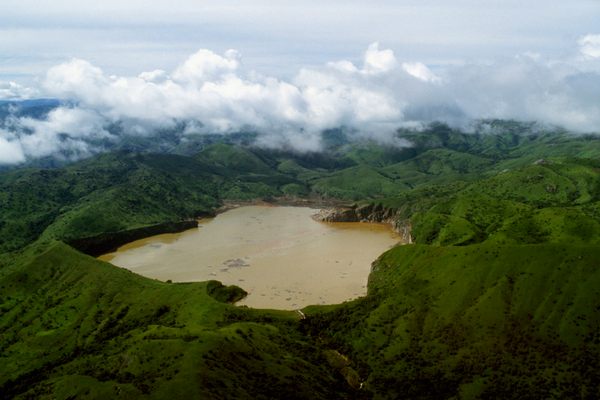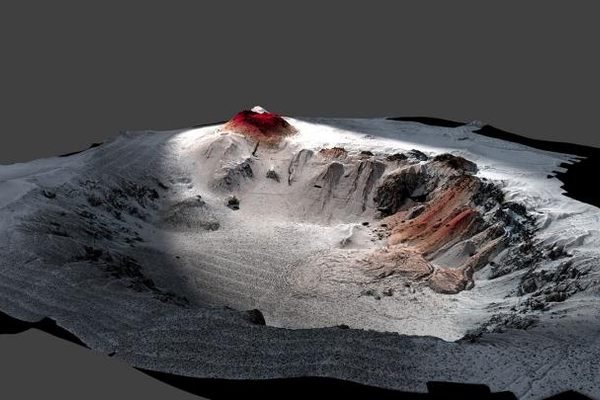Why a Hawaiian Volcano Is Sprouting Golden ‘Goddess Hair’
The gossamer strands are beautiful, but potentially dangerous.

Hawaii’s Big Island recently got a little bit hairier. Golden filaments resembling human hair measuring up to two feet in length are draped across parts of the island—an unusual effect of the ongoing eruption from Kīlauea volcano. These strands may look like biological matter, but they’re actually made of glass. Known as Pele’s hair, or goddess hair, the fibers are produced when gas bubbles within lava burst at its surface, reports Live Science.
“The skin of the bursting bubbles flies out, and some of the skin becomes stretched into these very long threads,” Don Swanson, a research geologist at the Hawaiian Volcano Observatory, told the publication. Some of them are so thin they’re virtually invisible. Others are roughly the same width as human hair, making their name especially apt. Because they’re almost weightless, they’re easily picked up by the wind and distributed around the island.
In Hawaiian mythology, Pele is the goddess of fire, lightning, and volcanoes. She is at once eater and originator of the islands, and portrayed in folklore as a woman—either bent with age or young, tall, and beautiful. Playing with her hair, however, is almost as dangerous as playing with the fire she is said to control. The strands usually have a small sphere at the end, but it’s prone to snapping off, leaving a sharp end. If the hairs snap, and make it into drinking water, they can be extremely harmful to humans or animals who may accidentally ingest it. “Imagine inhaling tiny slivers of glass. That’s what the Pele’s hair is,” Swanson told Live Science. “It can inflame and irritate anything that comes in contact with it.”
But for all their potential danger, they’re a surprisingly beautiful geological oddity, with curious Rumplestiltskin-like qualities. In the shadows, they look like straw; in the sunlight, they shimmer like gold. Either way, they’re interesting to look at it, but usually better not touched.


























Follow us on Twitter to get the latest on the world's hidden wonders.
Like us on Facebook to get the latest on the world's hidden wonders.
Follow us on Twitter Like us on Facebook